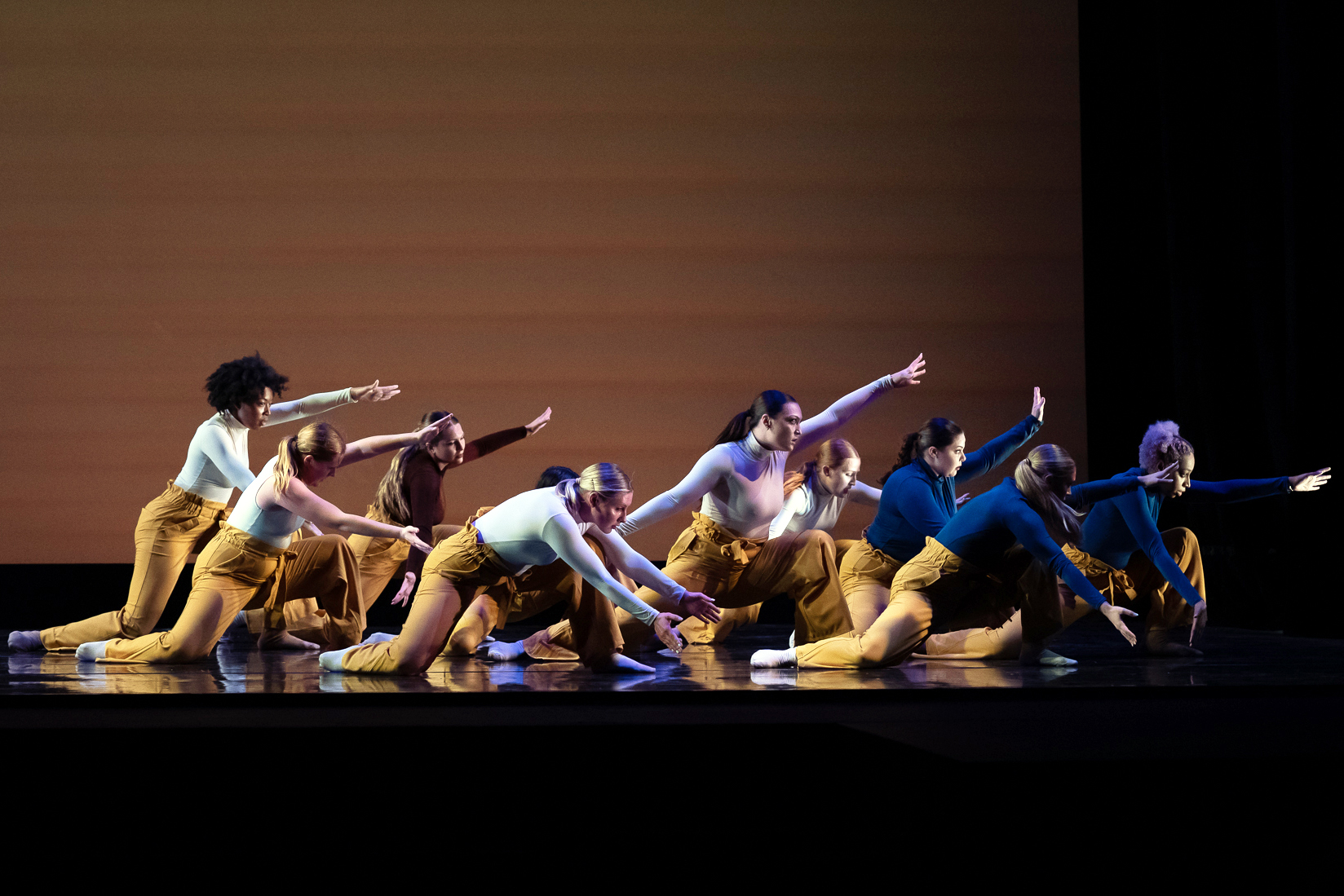
Loyola Marymount University’s Community Dance Project has expanded, thanks to funding from the Max H. Gluck Foundation. With the arts largely removed from K-12 core curriculum, LMU Dance is committed to sharing the transformative impact of movement, developing a repertory-style model comprised of traveling lectures, demonstrations, and performances at local high schools. LMU dancers and faculty visit high schools and invite young students to LMU, presenting sophisticated themes about emotional resilience, self-expression, inclusivity, spirituality, and racial and gender equality, through dance.
LMU Dance collaborated with numerous local high schools that receive federal Title I assistance, serving students in under-resourced communities where access to social and emotional support systems are lacking. This initiative is one branch of the Community Dance Project, which began during the pandemic with a study guide and virtual dance instruction of Bill T. Jones’s “Deep Blue Sea” to middle school students, also funded by the Gluck Foundation. Following the success of that program, LMU Dance received more funding to expand to high schools and added a touring aspect.
Prioritizing Artists of Color
For faculty members Bernard Brown and Taryn Vander Hoop, who spearheaded the initiative, one goal was to show the high school students that learning, research, and academics could intersect with art, creativity, energy, and joy. By prioritizing the work of artists of color as the anchor for this program, it allowed them to model successful and meaningful careers in the arts for young students of color, who made up the majority of the participating high school students.
The LMU group centered the experience around a dance choreographed by Brown called “Glimmer,” which was originally performed as part of the fall 2021 dance concert, and touches on themes of spirituality, centering Black women, superheroes, community uplift, and empathy. “‘Glimmer’ is in service to my history and my lineage as an African American who was raised by an African American woman, so I wanted to honor her and also honor all people who feel like outsiders in our society,” said Brown. “It was very important to physicalize what it’s like to lift up the people that feel like outsiders, to create a sense of community, of working together, of empathy, so we can progress as a society.”
In the lecture/demonstration, students explored the choreographic process, deconstructing the history and meaning behind the dance. The demonstration allowed students to connect the meaning behind the dance to the final performance, and to experience the artistic process in a completely new way, regardless of dance experience or interest.
A New Experience
Many of the high school students had never seen a live, professional dance performance. In reflections captured after the project completion, one participating student said, “The fact that I was able to view a dance performance up close rather than through a screen was my favorite part of the experience. My favorite part of the dance was when all of the dancers got together at one point to help a girl who had fallen. They all joined in to help one another out.”
Another commented, “What was meaningful to me was when Gabby and Morgan did a moment touching their heads together. It shows as Black women we are in everything together and together we are so powerful.”
Adopting a Repertory Model
There was an equally powerful impact for the LMU students who participated in the project this spring, because they learned how to translate elite-level artistry to young audiences. By engaging directly with the students, they could observe firsthand what dance can do to transform the energy and attention of individuals and communities. Due to the popularity of repertory experiences in undergraduate dance programs, Brown and Vander Hoop hope to make this project a permanent feature of LMU Dance, bringing not just repertory, but also hands-on teaching experiences to our students.
“There’s so much to be learned through embodiment, through doing and practice, which allows us to transmit ideas and concepts physically, which in many ways can be more meaningful than to simply articulate the same ideas,” said Brown. “This type of experience is very sought after in dance education – to have a repertory built into the program where students go out and perform. To offer this experience to our students and to our community is really a dream, and I’m thrilled to be a part of it.”
According to Vander Hoop, artists must also be flexible in their performance spaces and open to new forms of audience engagement, a lesson that is a vital part of a well-rounded dance education. “We are continually exploring avenues to teach lessons in innovative ways. The repertory model, touring around local area high schools, benefits both LMU student dancers and our surrounding communities,” she said. “It’s so advantageous for our students to take the work they’ve developed on stage, under the lights, and perform it in a new space. These experiences are so impactful and important as part of an education as an artist, because you will continue to do those things throughout a professional career. I think that sometimes gets lost in a university if you don’t have hands-on programs like this.”
Activating the LMU Mission
For Rosalynde LeBlanc Loo, professor and chair of the Dance Department, the project is particularly meaningful at a school like LMU, with its focus on educating the whole person. “LMU’s mission is one of social action,” said LeBlanc Loo. “It’s really about creating students who are active and responsible citizens. What dance can teach the community and young students out in the world, is the ability to take an idea and manifest it in the body, which gives it a whole new significance. For this program to be at LMU is incredibly meaningful, because it activates our mission.”
Photos by Heather Seybolt












